-
TrackoBit
Manage commercial vehicles with the new-age Fleet Management Software
TrackoBit -
TrackoField
Streamline your scattered workforce with Field Force Management Software
TrackoField -
Features Resources
-
Blog
Carefully curated articles to update you on industrial trends. -
White Paper
Insightful papers and analysis on essential subject matters. -
Glossary
Explore an alphabetical list of relevant industry terms. -
What’s New
Get TrackoBit & TrackoField monthly updates here. -
Case Study
Explore the cases we solved with our diverse solutions. -
Comparisons
Compare platforms, features, and pricing to find your best fit.
-
About Us
Get to know TrackoBit: our team, ethos, values, and vision. -
Careers
Join the most dynamic cult of coders, creatives and changemakers. -
Tech Support
Learn about our technical support team and services in detail. -
Events
Check out the exhibitions where we left our marks and conquered. -
Contact Us
Connect with us and let us know how we can be of service.
Everything You Need To Know About Last-Mile Delivery
- Author:Tithi Agarwal
- Read Time:
- Published:
- Last Update: January 3, 2025
Table of Contents
Toggle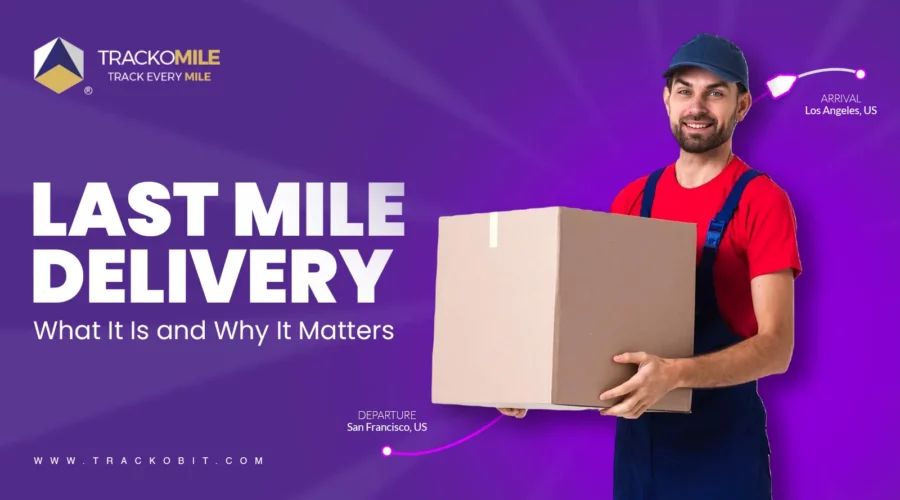
Logistics companies are now investing in last-mile delivery software. With it, they can deliver cost-effectively and on time to customers.
Table of Contents
ToggleRecently there has been a revolution in consumer behavior, especially regarding ordering online. The consumer is expecting cheap or even better free and super fast delivery.
Emphasis on words: Cheap and fast delivery.
This forms the core of last-mile delivery. It is the most crucial and yet the most difficult part of the whole supply chain. This is because it connects businesses to their customers. So it needs to be faultless and as smooth as possible.
This is only possible when logistics companies start using last-mile delivery tracking software. The software guarantees optimized and on-time delivery.
Read this interesting blog to learn everything there is to know about last mile process.
What is Last-Mile Delivery?
Last-mile delivery refers to the last step of the logistics process. It begins when the rider picks up the parcels from the distribution center. The process ends only when the order is delivered to the end consumer.
It is the most crucial step and the costliest leg of the supply chain. Industries like e-commerce or food delivery aim to make it as quick and smooth as possible. At the same time, they strive to meet customer demands effectively.
What are the Steps Involved in Last-Mile Delivery?
Let us view how the last leg of supply chain works. The process consists of five steps:
- The first step involves scanning and digitally entering orders into the central system. But, it is not part of last-mile process. A tracking ID is created so that all stakeholders can track and monitor the parcel.
- The second step includes orders arriving at the warehouses or fulfillment centers. This is the beginning of the last-mile transportation process. Orders are being assigned to riders and prepared for dispatch.
- In the third step, orders are assigned to riders after considering many factors. The agents are given recipient addresses and briefed about the optimized routes. This is essential for an optimized, cost-effective last-mile delivery operation.
- The fourth step consists of scanning orders and loading them into the vans and bags. This scanning is essential as it updates the order status for the sender and the customers. It also reduces the chances of the packages getting lost on the way.
- In the final step, the package arrives at its final destination. The rider confirms the delivery by collecting ePODs. This step is essential for verifying the delivery and signaling the end of the process.
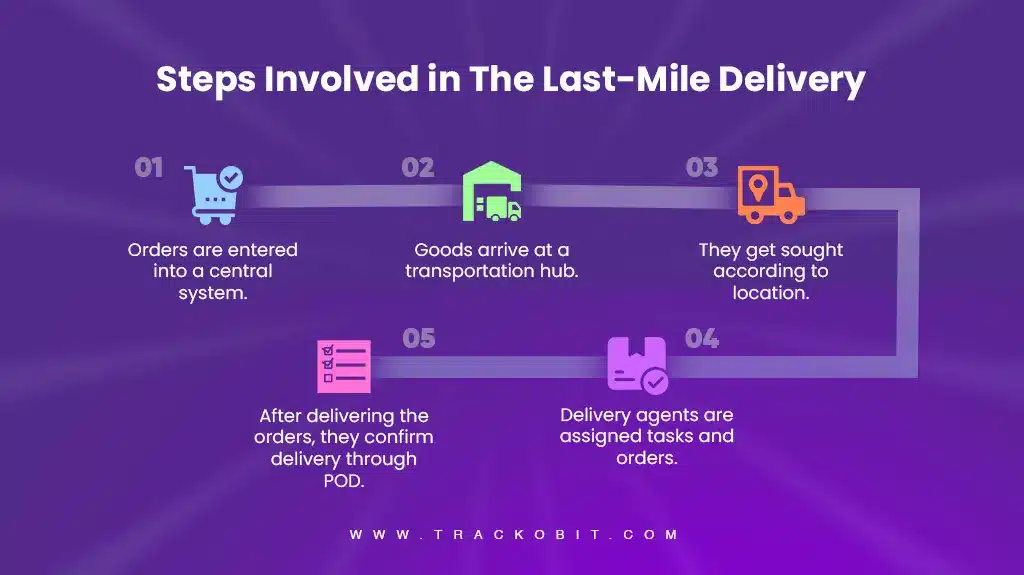
How Last Mile Delivery Works
Why is Last-Mile Delivery Important?
As said before, last-mile is significant as it connects businesses with customers. Creating a seamless order-to-delivery experience is now a top priority for businesses worldwide.
The stakes are high in last-mile. A seamless final leg transportation translates into brand loyalty. But, error-filled or delayed operations can ruin the brand image. This can even cause you to lose consumers. Companies are trying to smoothen the process to ensure this does not happen.
Did you know:
70% of consumers say speed, convenience, and friendly delivery service matter the most.
Price and product are no longer the most significant differentiating factors for companies. It is their services and goods.
87% of consumers said that a favorable delivery method impacts their online purchase.
To improve customer loyalty and retention, provide them with:
- Delivery tracking options
- Accurate ETAs,
- Out-for-delivery alerts
This enhances transparency and adds to the trust. Thus improving the experience of last-mile.
What is the ‘Last-Mile Problem’?
Now that you know how essential last-mile is in logistics. But the last mile has an entire set of challenges to itself. For example, balancing customers’ expectations for free and express delivery while curbing costs. And the paradox is that allowing fast and free transportation only adds expenses.
It just takes one delayed delivery for customers to switch their shopping brands. This proves that companies cannot afford to disappoint them.
Companies like Amazon have set the bar high with their efficient delivery infrastructure.
1. Manual Process
Planning deliveries and tracking updates by relying on pen, paper, and phone calls. Today, these outdated methods are no longer effective. As a result, it stands no chance of winning in the current global marketplace. Instead, today’s logistics operations demand and rely on GPS-enabled, cloud-automated software systems.
The manual method is rigid and sluggish. Thus increasing errors and inefficiencies. For example, consumers now demand that logistics companies be flexible with their delivery. If they are not available, the delivery attempt should made again. This is causing companies to rethink and reinvent their entire logistics process.
2. Fulfilling Customer Demands
Customer satisfaction is essential if a business wants to thrive. Higher customer satisfaction automatically translates into an increase in sales for the business. But it comes with tackling their ever-changing demand.
Companies often have to pay extra from their pocket to meet their expectations. Logistics businesses face the challenge of streamlining this step while maintaining customer experience.
3. Rising Costs
Sending each order to its destination involves a huge undertaking for businesses.
The riders must battle traffic and parking to deliver orders. This is causing businesses to opt for last-mile delivery software. The software optimizes the process by automating dispatch management. This increases the efficiency of the operation.
4. Unpredictability in Routes
Logistics companies often replan transport routes, but smooth deliveries are never guaranteed. Heavy traffic or roadblocks can delay agents.
Poor vehicle maintenance by companies or agents can also cause issues. Again, this increases the chances of unprecedented breakdowns while en route. Also, due to delays, products like food or flowers might not remain as fresh.
5. Lack of Real-time Visibility
Missing transparency and real-time visibility are major last-mile problems. Customers want to be in the know about their purchases. Logistics companies must provide consumers with a tracking ID. This helps all stakeholders track the status of the orders.
But with advancements in technology, tracking codes are just not enough. Customers expect full transparency on order location, delivery details, and exact ETA.
6. Inefficient Route Planning
Poor route planning or optimization leads to delays, higher costs, and unhappy customers. Route optimization is essential for managing and scheduling multiple deliveries in one go.
Using spreadsheets for manual planning complicates work for logistics managers and riders. Using Google Maps is unreliable as there is no route optimization or stop sequencing. That is why companies must invest in software that provides route optimization solutions.
How Can Last-Mile Delivery Software Help Mitigate These Challenges?
Technology solutions can solve or eliminate these challenges. Last-mile technology helps businesses meet customer demands and expectations across industries. This technology boosts customer satisfaction, optimizes operations and costs. It also reduces reliance on unreliable third-party apps.
With it, logistics companies can stay agile without sacrificing efficiency or customer experience.
1. Assigning Deliveries
The first step is to set and assign delivery targets for each agent. Last-mile software makes this easy by automating the assignment process. It evenly divides order volume, matches riders to orders, and suggests optimal routes. Managers can also track the real-time status of deliveries completed by agents.
You also get rider roaster and right algorithms for scheduling drivers and deliveries.
2. Dispatch Management
Using the best dispatch management software lets you plan and assign deliveries smartly. This involves allocating deliveries according to
- Vehicles available and suitable
- Nature of the goods
- Especial request made by the consumers
- Riders available and skills
Route planned
3. Route planning and Optimization
Consumers expect fast and affordable deliveries, and route optimization is the key. This feature helps plan the best and shortest route possible. It considers 120+ factors before suggesting routes like:
- Distance
- Weather
- Past Data
- Vehicle’s towing and payload capacity
- and more.
With optimized routes, riders can deliver on-time while reducing fuel and time consumed. This is beneficial for resource optimization and handling large volumes of orders.
4. Live Tracking/ Providing Live Updates
Customers can feel frustrated when they are unaware of the status of their order. This is especially true during unexpected events when the cause of the delay is unclear. They might even consider canceling their order.
Live tracking and notifications will help you build their trust in your services. This is essential for managers. It helps them track employee locations and gain visibility into on-ground activities.
5. ETAs and ePOD
ETA is crucial in last-mile, keeping consumers informed about their orders’ status. It helps them prepare for COD payments and reduces number of attempted deliveries.
ePOD ensures safe delivery and enhances transparency by confirming order fulfillment. The software automates this with four POD methods:
- automatic
- OTP
- e-signature
QR code scan via the agent’s app.
6. Analytical Reporting
Analytical reports reveal the causes of rising costs and second-attempt deliveries. For example, the last-mile’s analytical reporting system allows you to monitor key metrics like:
- Success rates,
- On-time delivery
- Failed or reattempted deliveries,
- Distance traveled, etc.
Analytical reports aid in decision-making and budget formation. Managers get an overview of the success of the strategies employed. These reports play a vital role in helping logistics companies scale.
7. Rider App
Last-mile technology comes with a rider app, which is a game changer. Through it the riders get access to data and features that are time saving and helpful in delivering orders. The app consists of task-related data. All information on their delivery route to address is available on it.
It even has an inbuilt chat box that allows them to connect with their in-office staff in case of any query or difficulty completing their job. Through the rider app, the agents are able to work lucratively.
Benefits Of Adopting Solutions For Last-Mile Delivery
Over time, the final mile industry has seen technological advancements that have worked in its favour. Technology like automation, artificial intelligence, and telematics has smoothened out a lot of wrinkles in the logistics industry’s processes.
Because of current technology, last-mile businesses can access solutions that enhance their work process. These solutions can yield benefits like augmented productivity, reduced expenses, etc.
1. Shortens Delivery Time
Logistics companies lose business due to delayed deliveries. But through route-optimizing solutions, courier companies can chalk out the fastest and least congested route for transportation. This shortens delivery time, thus leading to customer retention.
2. Cost Optimization
The digitalization of the last-mile process has improved the quality of service and enhanced its affordability. Optimized route, live updates, and driver behavior monitoring helps to eliminate time and cost-inefficient habits of the agents like idling fuel pilferage, and reckless driving.
3. Real-Time Tracking
Many logistics companies are now resorting to using last-mile delivery technology to keep tabs on the movement of orders. And the same facility is being provided to customers who, too, can track their orders in real time. In addition, logistics companies track consignments and agents for visibility and accountability.
4. Better Customer Service
Fast and cheap, and smooth process are responsible for customer satisfaction. With the help of technology and software, all these parameters are easily met. It is only due to the advancement in technology customers are able to gain end-to-end visibility of their orders. This transparency has a positive impact on brand and consumer relations.
How Has the Delivery System Evolved Over the Year?
Over the years, the consumption and demand patterns of consumers have evolved. Back then, they were happy to wait for a week to receive their orders, but now they expect 10-minute door-to-door delivery. Let’s explore some forms of evolving and emerging forms of deliveries.
1. Quick Commerce
Quick commerce has been a game changer for the e-commerce industry. Through it the brands are able to offer the one-day delivery option or even less. Quick commerce relies on large warehouses, local vendors, and also micro fulfillment centers.
e-Commerce giants such as Amazon are leveraging this option to offer its consumers one-day or less than 24 hours delivery options. Time is the ruling factor in such kind of system.
2. Hyperlocal Delivery:
Hyperlocal system involves delivering goods and products directly from the seller to the consumers. Geography is a prominent factor in this system. This is because it promises a 10-15 minute delivery, due to which geography becomes a restriction.
It requires the agent to pick up the order from the seller or a warehouse and deliver it directly to the customer’s location. This type of transport is done in a smaller geographical area within a few minutes or hours.
Businesses like Zomato, Expressbees, Blinkit, Dunzo, and Wefast that deal with FMCG products like food and groceries and same day deliveries require a flawless system.
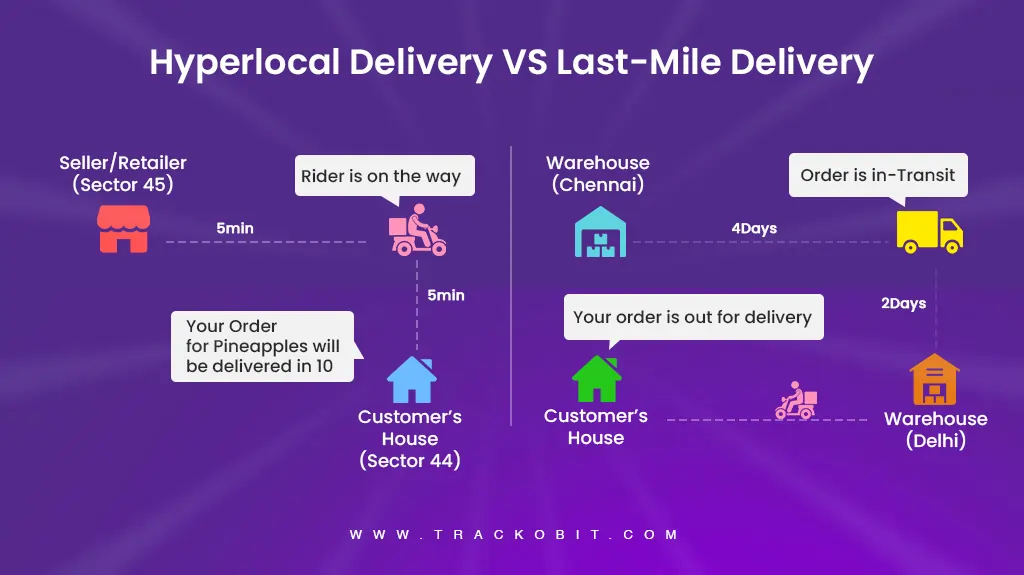
Difference between Hyperlocal and Last Mile delivery
How is Hyperlocal Delivery different from Last-Mile Delivery?
To prevent you from getting confused, here is a difference between the two.
1.Time Taken for Delivery
Last Mile Delivery:
The time taken for the last-mile is not less than 12-16 hours. You will receive a message stating that the delivery agent will deliver your order today. The time could sometimes be more than 16 hours, especially in metropolitan cities where the delivery agents have to cover more areas.
Hyperlocal Delivery:
In hyperlocal delivery, the aim is to deliver the order either in a few minutes or a few hours, like 2-3 hours. This is because the geographical area to be covered is less than what it is in the last-mile delivery system.
2.Delivery Responsibility
Last Mile Delivery:
The responsibility of delivering the orders in the last mile is on the assigned agent of the courier company. A single logistics company carries out the end-to-end process.
Hyperlocal Delivery:
In the hyperlocal delivery method, the order can be completed either by the sellers’ field employees or by the delivery company they appoint.
3. Delivery Area
Last Mile Delivery:
There is no delivery area restriction in the last-mile. The delivery agent delivers in a radius of up to 30km. The location of the central transportation hub determines the delivery area.
Hyperlocal Delivery:
The delivery radius is way smaller in hyperlocal delivery. The maximum distance the delivery can be done is a 5-15km radius.
4. Products Delivered
Last Mile Delivery:
A range of products, like televisions, clothes, etc., can be delivered through the last mile. There is no restriction in the product category.
Hyperlocal Delivery:
The delivery of fresh food or FMCG products is only possible with the hyperlocal delivery system.
Last-Mile Delivery With TrackoMile
Last-mile delivery is vital to the supply chain, yet even top players struggle to achieve flawless express delivery.
Last-mile delivery software simplifies these challenges, enabling fast, affordable deliveries. TrackoMile is the ultimate solution, offering real-time agent tracking, route optimization, and dispatch management. It’s the go-to tool for seamless last-mile delivery.
Frequently Asked Questions
-
Why is Last-mile delivery so expensive?
The average cost of last-mile delivery is $1.50 per mile, accounting for up to 53% of a product’s total shipping cost. This cost includes: - Labor costs, - Fuel prices, - Cargo carriers' costs, - And the driver’s salaries. Therefore, a failed operation only adds up to this already expensive process.
-
What are the upcoming trends in last-mile deliveries?
Here are some of the last-mile trends to keep an eye on in 2023: 1. Smart technology for tracking 2. Robotic and drone deliveries 3. Undertaking steps toward sustainability 4. Micro Warehousing
Tithi Agarwal is an established content marketing specialist with years of experience in Telematics and the SaaS domain. With a strong background in literature and industrial expertise in technical wr... Read More
Related Blogs
-
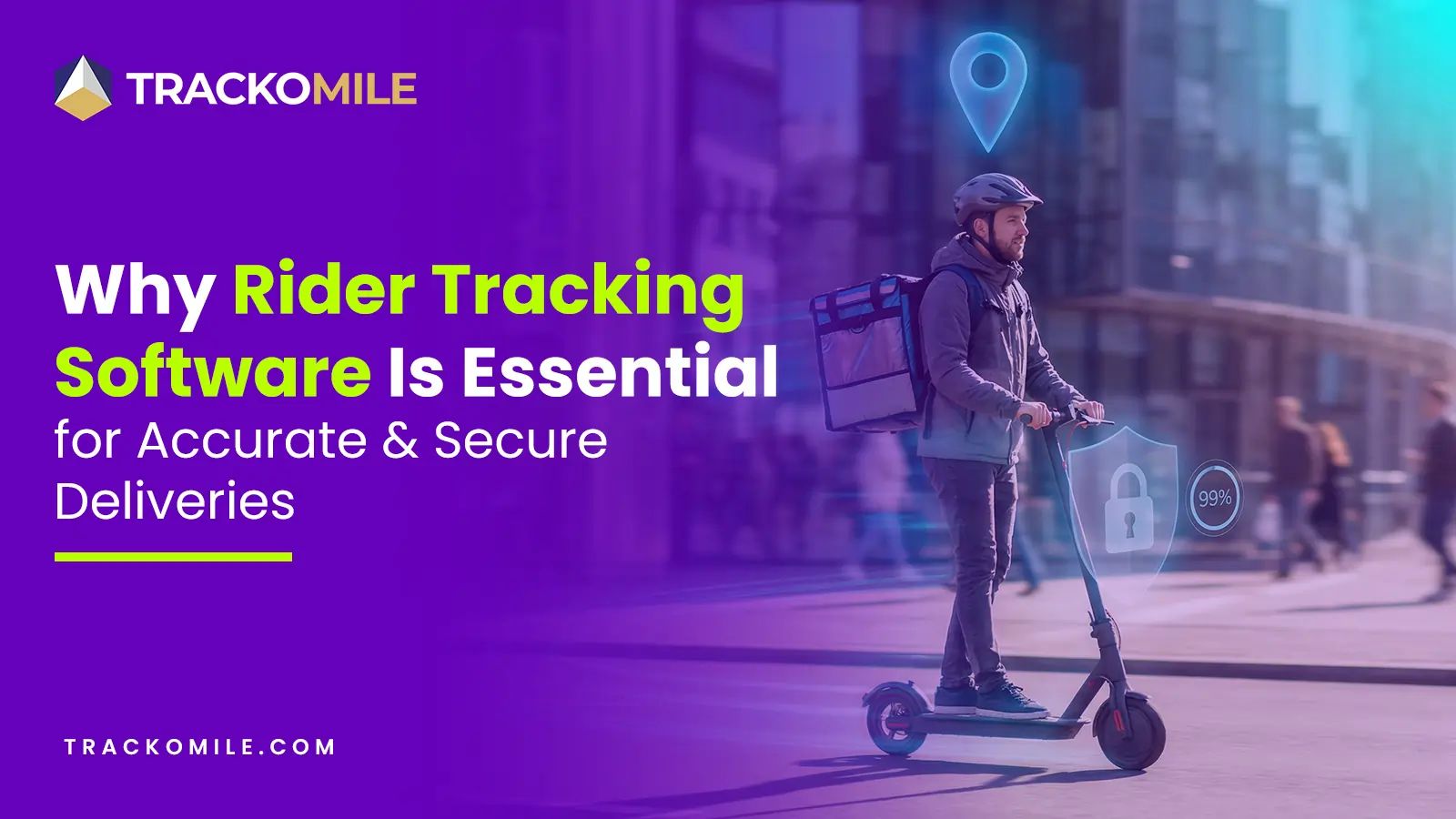
How Rider Tracking Software Improves Delivery Accuracy and Reduces Fraud
Tithi Agarwal December 8, 2025Rider tracking software improves delivery accuracy with real-time GPS visibility and automated ePOD. It also enables route optimisation and fraud…
-
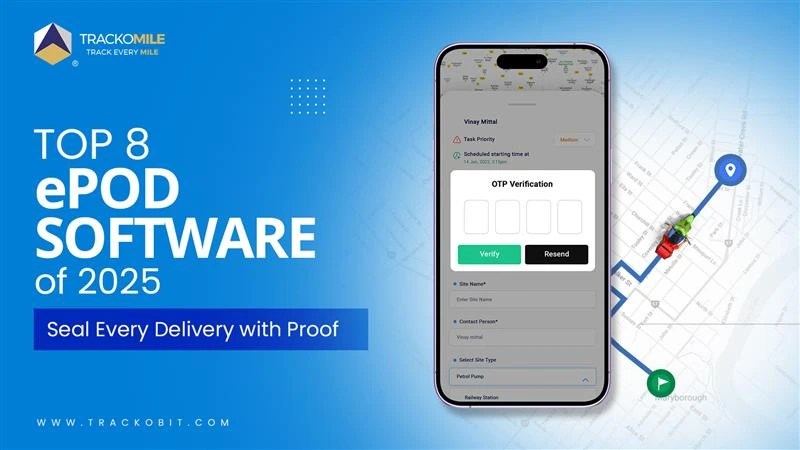
Top Electronic Proof of Delivery (ePOD) Software in 2026
Tithi Agarwal September 25, 2025Electronic proof of delivery has become the backbone of modern logistics. Explore the top 8 ePOD software in 2025 and…
-
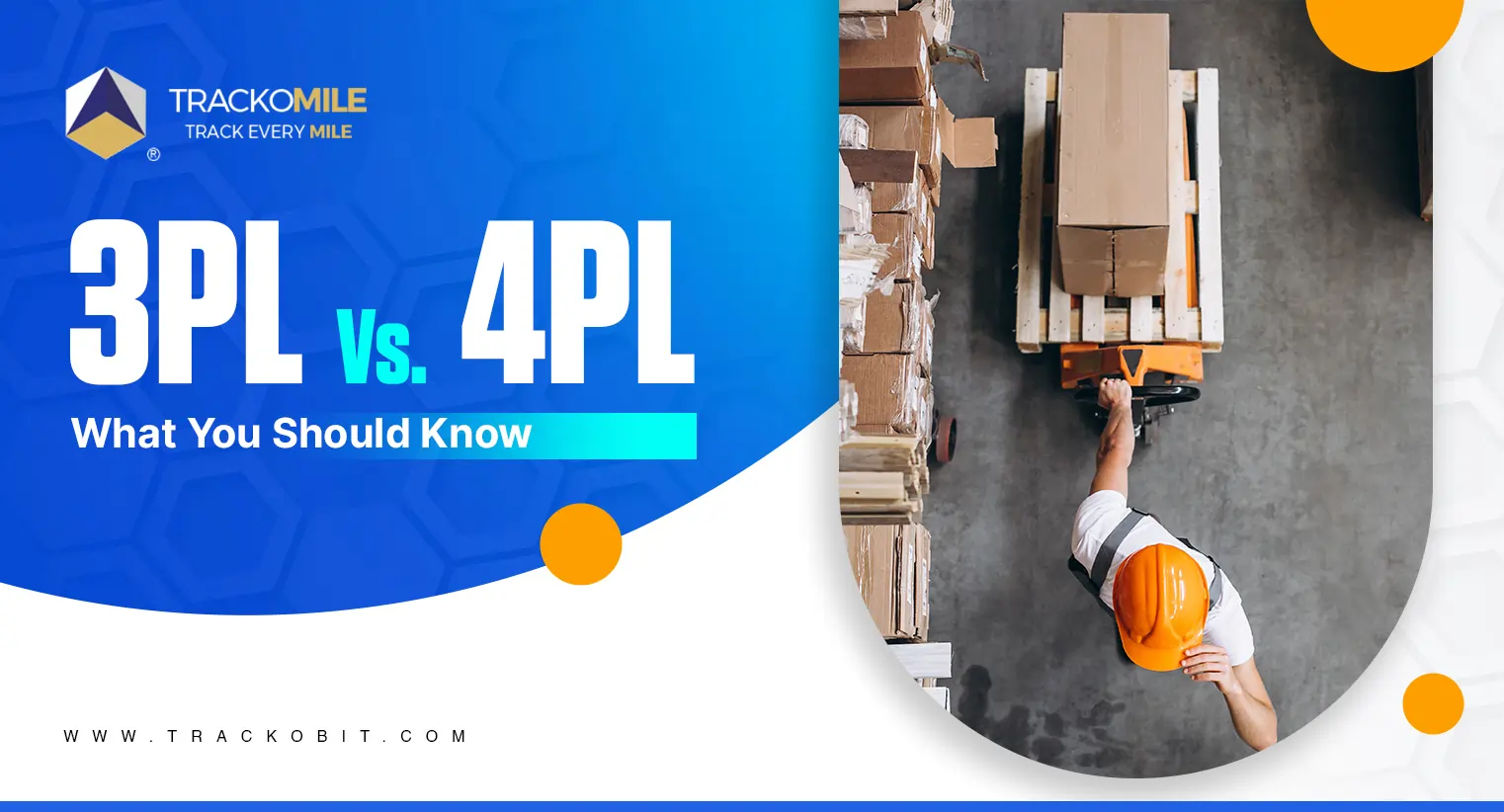
3PL vs. 4PL: Which is Best for Your Business?
Tithi Agarwal September 25, 2024Confused about choosing between 3PL and 4PL for your retail supply chain? Read this blog to find out which is…
-
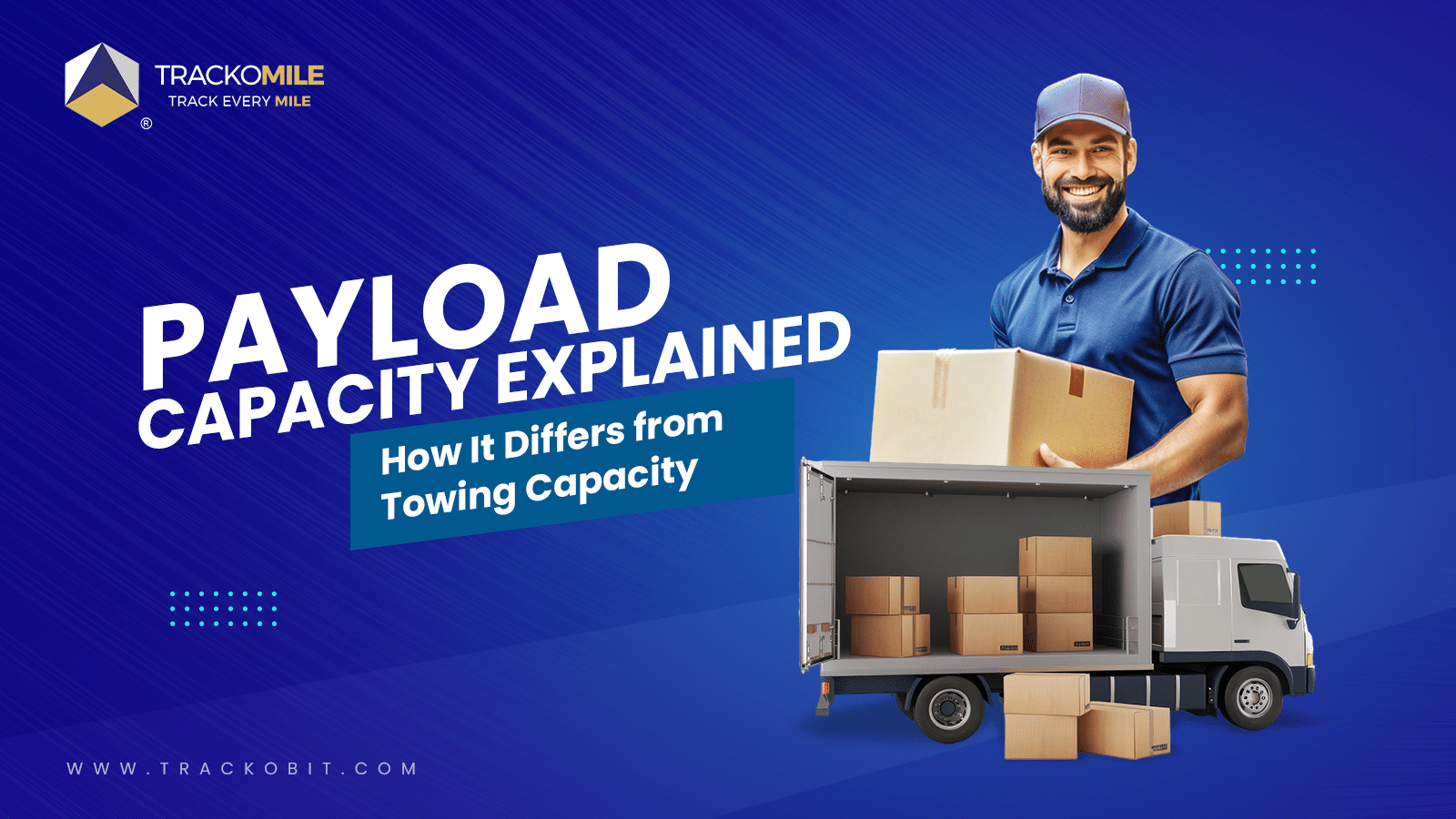
What is Payload Capacity? Payload Capacity Vs. Towing Capacity
Tithi Agarwal September 10, 2024Payload capacity is the total weight a vehicle can safely carry, and it is crucial for safety and compliance. Exceeding…

Subscribe for weekly tips to supercharge your last-mile delivery.
Your inbox awaits a welcome email. Stay tuned for the latest blog updates & expert insights.
"While you're here, dive into some more reads or grab quick bites from our social platforms!"Stay Updated on tech, telematics and mobility. Don't miss out on the latest in the industry.
We use cookies to enhance and personalize your browsing experience. By continuing to use our website, you agree to our Privacy Policy.



































